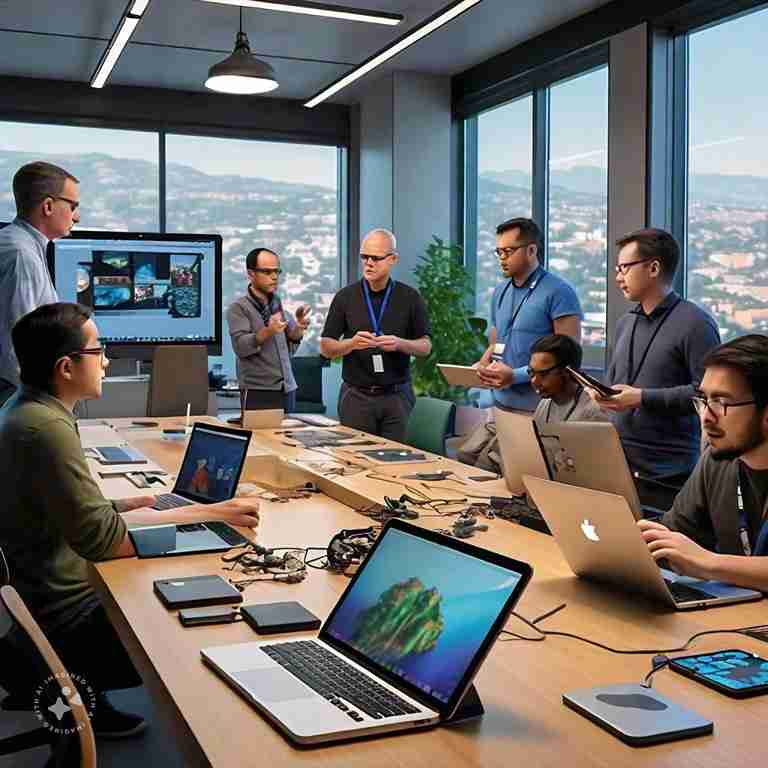Apple AR Development
Saffron Tech offers unmatched augmented reality experience for iPad and iPhone. We combine digital objects with surrounding environment to take your app beyond the screen. Our experts help you interact with the real world in an innovative way.
We are known for bringing latest core technologies like Wikitude’s tracking technologies, Google’s ARCore and Apple’s ARKit in one environment.

- Unmatched Reliability:
We deliver best in class computer vision that ensures reliable and robust experience in different environment. - Creative Environment:
We offer developers complete freedom to create unique experience that gives a competitive edge. - Expand Reach:
We fully support leading digital eyewear, tablets and phones across iOS, Android and UWP. - Advanced Vision:
We can easily recognize range of everyday object, images and environments.
Our VR/ AR Development Expertise:
- Mobile VR: Samsung Gear VR Google Cardboard
- PC VR: Oculus Rift, HTC Vive, Razer Hydra
- Platforms: Unreal Engine 4
- Web VR: Visor, Mozilla A- Frame, Responsive WebVR
- Languages: HTML5, Javascript, C++, Objective-C, C#, Java, Swift, etc.
- Photogrammetry (3D scanning): Autodesk, Agisoft Photoscan
- 3D Modelling: Pixologic ZBrush, Speedtree, Blender, MODO
Our Process
- Our experts analyze your VR/AR or RFP/RFQ description. They ask questions and get the complete insights to plan project requirements, specifications and milestones. In the second stage of this phase, we will send your proposal and will suggest model based on your budget and preference.
- We perform candidate screening and vetting and to you a list of shortlisted candidates that matches your project requirements.
- We have special methodologies to assign manager to oversee VR dev project. We can even recruit one for you in case you don’t have any PM resources on-site.
- We take care of software architecture, Big data Analytics integrations, development of front-end and back-end, Ux/UI design, security testing, application testing before final release. We provide our clients with test versions to offer feedback at every step.
- This model allows maximum involvement, transparency, cost saving and guarantee smooth collaboration.
Frequently Asked Questions
The main tools for Apple AR Development include ARKit, RealityKit, and Reality Composer. ARKit provides the core framework for AR features, while RealityKit offers rendering and physics capabilities. Reality Composer is a tool for creating AR scenes and animations without coding.
Apple AR Development primarily uses Swift and Objective-C. Swift is the preferred language due to its modern syntax, speed, and ease of use, especially when working with ARKit and other Apple frameworks.
To get started, you need a Mac with Xcode installed, along with an iOS device that supports ARKit. Familiarize yourself with Swift, explore ARKit documentation, and try building basic AR experiences using sample projects available from Apple.
Popular applications include AR games, interactive education apps, virtual try-on for retail, navigation and mapping enhancements, and industrial training simulations. Apple AR Development allows brands to enhance user engagement through interactive and immersive content.
Apple’s LiDAR Scanner, available on select devices like the iPad Pro and iPhone Pro models, improves AR experiences by providing high-accuracy depth mapping. This enables faster and more precise placement of virtual objects, even in low-light conditions.
Limitations include device compatibility (only newer iOS devices support ARKit), battery consumption, and performance issues on lower-end devices. Also, creating highly complex AR scenes may require advanced optimization techniques to maintain smooth performance.
To publish your AR app on the App Store, ensure it meets Apple’s guidelines, test thoroughly on supported devices, and submit your app through Xcode. You’ll need an Apple Developer account, and it’s recommended to provide engaging app previews and screenshots highlighting AR features.
